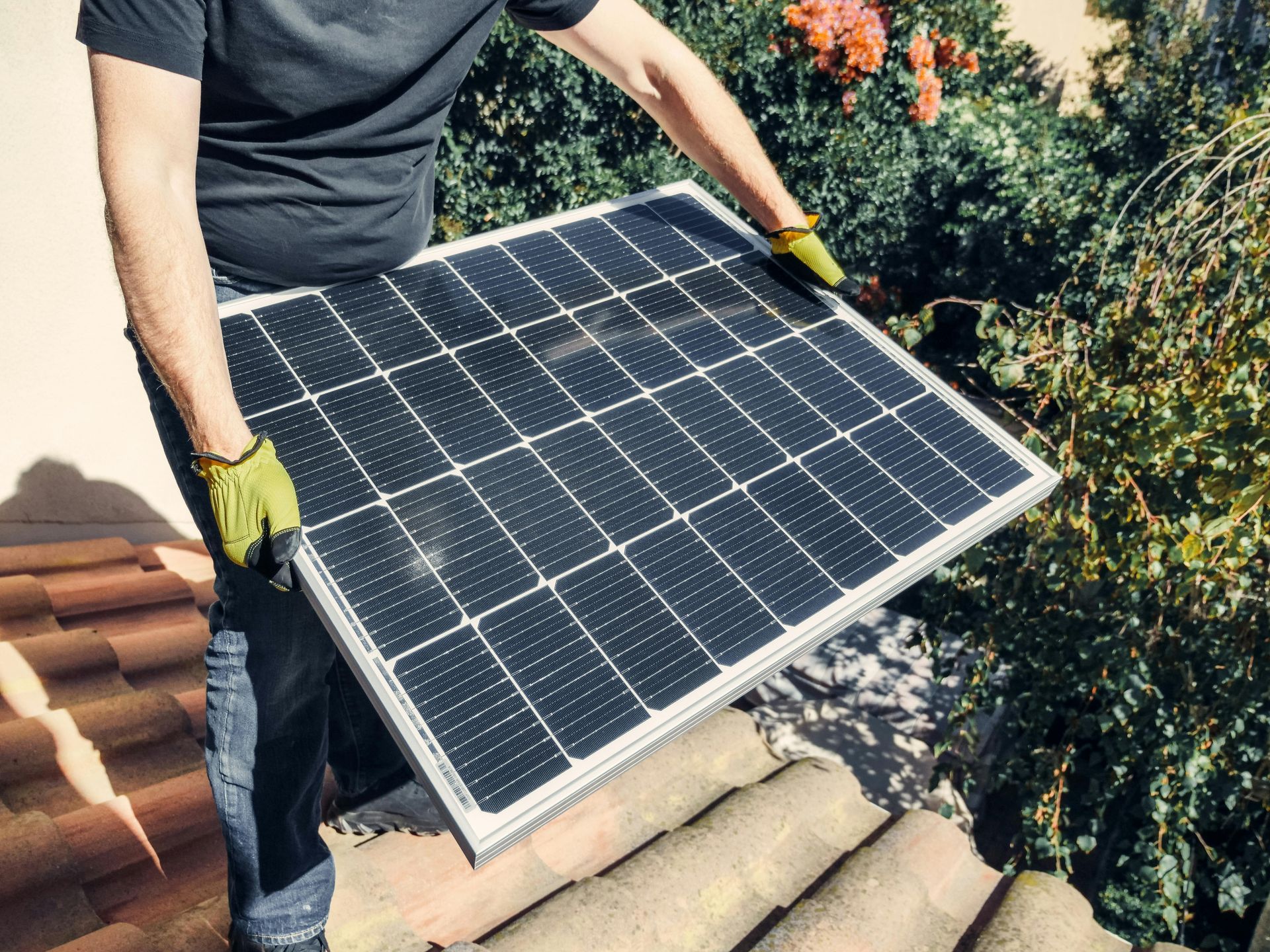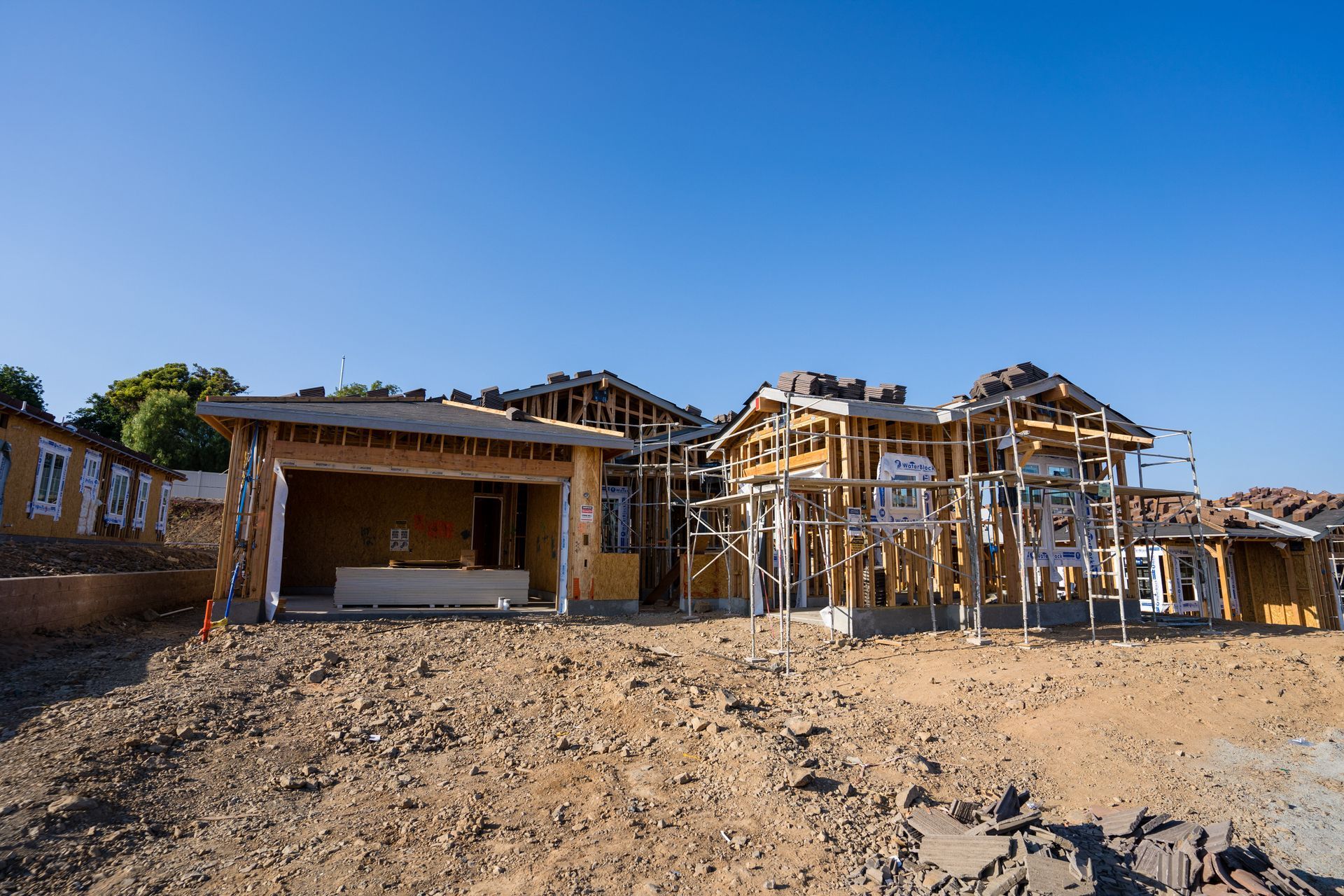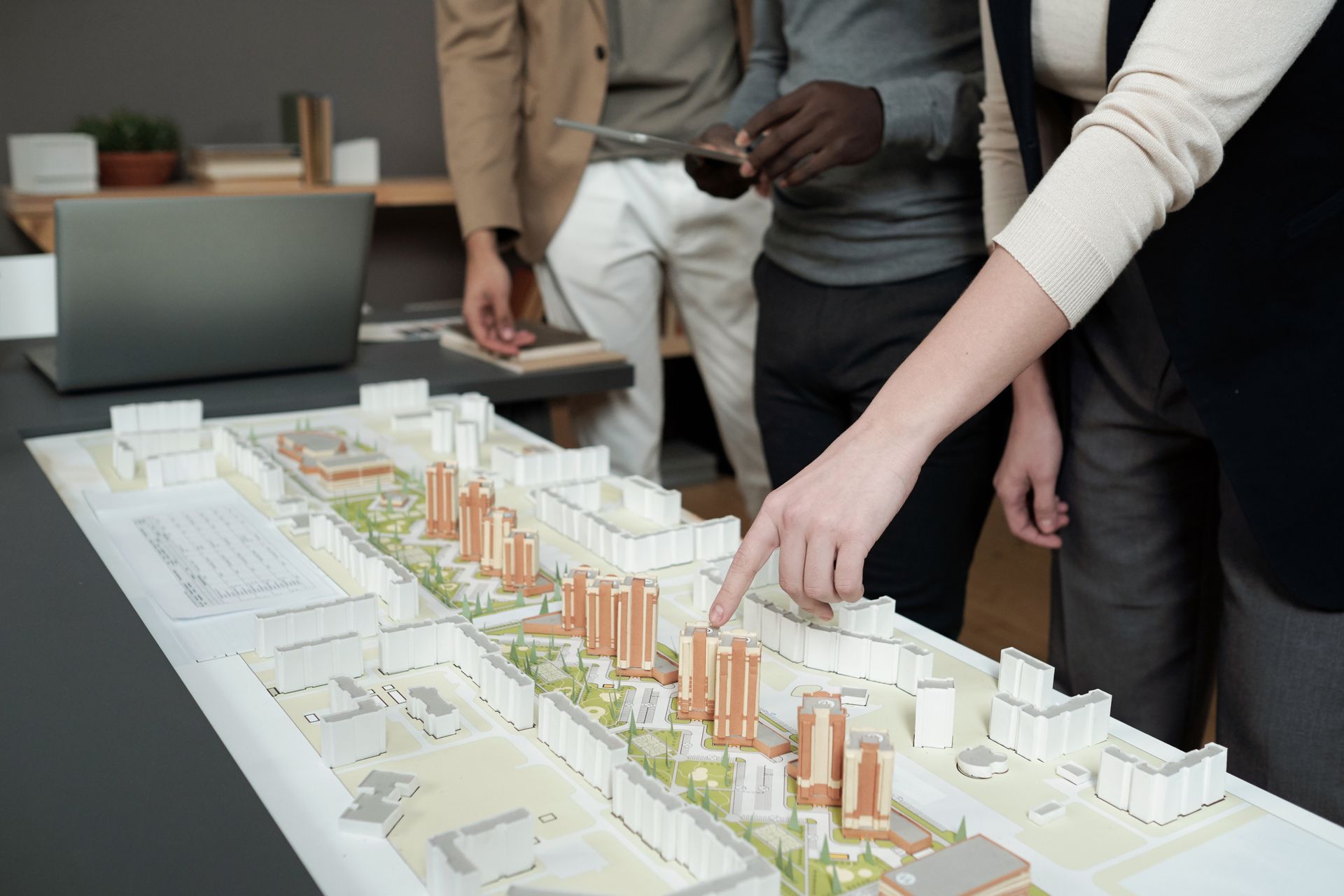SELLING A PROPERTY WITH A SOLAR LEASE AGREEMENT IN SACRAMENTO

Selling a home can be a complex process, and when you add a solar lease agreement into the mix, the process becomes even more intricate. With Sacramento's sunny climate and an increasing number of homeowners turning to solar power to reduce energy costs and environmental impact, understanding how to navigate the sale of a property with a solar lease agreement is more important than ever.
In this comprehensive blog post, we'll delve into everything you need to know about selling a property with a solar lease agreement in Sacramento. From understanding what a solar lease agreement is to navigating potential challenges during the sale process, we'll cover all the essential details to help ensure a smooth and successful transaction.
What Is a Solar Lease Agreement?
Before diving into the specifics of selling a property with a solar lease, it’s crucial to understand what a solar lease agreement is and how it works.
How Solar Lease Agreements Work
A solar lease agreement is a contract between a homeowner and a solar energy provider. Under this agreement, the solar energy provider installs and maintains a solar panel system on the homeowner’s property. In exchange, the homeowner agrees to pay a monthly lease payment, typically for a period of 20 to 25 years.
This arrangement allows homeowners to benefit from solar energy without the upfront costs of purchasing and installing a solar panel system. Instead of paying for the system, homeowners pay a monthly fee, which is often lower than their previous electricity bills.
Key Features of a Solar Lease Agreement
- No Upfront Costs: Homeowners do not need to pay for the installation of the solar panels. Instead, they enter into a lease agreement with the solar provider.
- Fixed Monthly Payments: The homeowner pays a fixed monthly lease payment for the duration of the agreement, which is typically between 20 to 25 years.
- Maintenance Included: The solar provider is responsible for maintaining and repairing the solar panel system during the lease term.
- Option to Buy: Some solar lease agreements include an option for the homeowner to purchase the solar panel system at the end of the lease term.
The Benefits and Challenges of Selling a Home with a Solar Lease Agreement
Selling a home with a solar lease agreement in place can have both advantages and challenges. It’s essential to be aware of these factors as you prepare to list your property.
Benefits of Selling a Home with a Solar Lease
- Attractive to Buyers: A home with a solar panel system can be attractive to buyers, particularly those interested in energy efficiency and reducing their carbon footprint. The potential for lower energy bills can be a significant selling point.
- No Maintenance Hassles: Since the solar provider is responsible for maintaining the system, buyers may find the prospect of a solar lease less daunting, knowing they won’t have to worry about maintenance.
- No Upfront Costs for Buyers: Buyers do not have to pay the upfront costs associated with purchasing a solar panel system. Instead, they take over the lease payments, which may be lower than their traditional electricity bills.
Challenges of Selling a Home with a Solar Lease
- Transfer of Lease: One of the primary challenges is ensuring that the solar lease can be transferred to the new homeowner. Some buyers may be hesitant to take on a lease agreement they didn’t negotiate themselves.
- Financing Complications: Some lenders may have reservations about financing a home with a solar lease agreement, potentially complicating the mortgage approval process for buyers.
- Disclosure Requirements: Sellers are required to fully disclose the terms of the solar lease agreement to potential buyers. This includes providing detailed information about the remaining lease term, monthly payments, and any transfer fees.
Steps to Selling a Property with a Solar Lease Agreement in Sacramento
If you're planning to sell your home in Sacramento with a solar lease agreement in place, there are several steps you can take to streamline the process and maximize your chances of a successful sale.
1. Review the Solar Lease Agreement
Before listing your property, it's essential to carefully review the solar lease agreement. Pay close attention to the terms related to the transfer of the lease, including any fees or requirements that may apply. Understanding the specifics of the lease will help you prepare for discussions with potential buyers.
Key Points to Review:
- Transferability: Confirm whether the lease is transferable to a new homeowner and what steps are required to complete the transfer.
- Transfer Fees: Determine if there are any fees associated with transferring the lease to the new owner.
- Remaining Term: Understand how many years are left on the lease and how this may impact the buyer's decision.
2. Get in Touch with the Solar Provider
Contact the solar energy provider to inform them of your intention to sell the property. The provider can offer guidance on the process of transferring the lease and provide any necessary paperwork or documentation.
Questions to Ask the Solar Provider:
- How is the lease transfer process handled?
- What documentation is required from the buyer and seller?
- Are there any fees involved in the transfer?
3. Disclose the Solar Lease to Potential Buyers
Full disclosure is critical when selling a property with a solar lease agreement. Be upfront with potential buyers about the existence of the lease and provide them with all the necessary details.
Information to Provide to Buyers:
- Copy of the Solar Lease Agreement: Provide a copy of the lease agreement to potential buyers so they can review the terms.
- Details of Monthly Payments: Clearly outline the current monthly lease payment and any annual escalations.
- Maintenance Responsibilities: Explain that the solar provider is responsible for maintaining the system.
4. Highlight the Benefits of the Solar Lease
When marketing your home, be sure to highlight the benefits of the solar lease agreement. Focus on the potential energy savings, environmental benefits, and the fact that the buyer will not need to worry about maintenance or repairs.
Marketing Tips:
- Energy Savings: Emphasize the potential cost savings on electricity bills, especially in Sacramento’s sunny climate.
- Environmental Impact: Appeal to eco-conscious buyers by highlighting the reduced carbon footprint associated with solar energy.
- No Upfront Costs: Make it clear that the buyer will not need to pay for the solar panel system upfront, as the lease is already in place.
5. Address Buyer Concerns
Be prepared to address any concerns or questions that potential buyers may have about the solar lease agreement. Buyers may have reservations about taking on a lease they did not negotiate, so it's important to provide clear and honest information.
Common Buyer Concerns:
- Long-Term Commitment: Buyers may be concerned about committing to a long-term lease. Reassure them by explaining the potential benefits and the fact that they can continue to enjoy energy savings over the life of the lease.
- Lease Transfer Process: Buyers may be unsure about the process of transferring the lease. Walk them through the steps involved and provide any necessary documentation from the solar provider.
- Impact on Resale Value: Some buyers may worry about how the solar lease will impact the future resale value of the home. Explain that solar panels can be an attractive feature for future buyers, particularly in Sacramento.
6. Work with a Knowledgeable Real Estate Agent
Given the complexities involved in selling a property with a solar lease agreement, it’s highly recommended that you work with a knowledgeable real estate agent who has experience with similar transactions in Sacramento. An experienced agent can guide you through the process, help you market the property effectively, and ensure that all legal and contractual obligations are met.
Benefits of Working with a Local Real Estate Agent:
- Understanding of Local Market: A Sacramento-based real estate agent will have a deep understanding of the local market, including how solar energy systems are perceived by buyers.
- Experience with Solar Leases: An agent with experience in handling properties with solar leases can help navigate potential challenges and ensure a smooth transaction.
- Effective Marketing Strategies: A knowledgeable agent can help you highlight the benefits of the solar lease to attract potential buyers and address any concerns they may have.
7. Consider Offering Incentives
If you encounter resistance from potential buyers regarding the solar lease agreement, consider offering incentives to make the property more appealing. This could include offering to cover the first few months of lease payments or paying the transfer fee on behalf of the buyer.
Incentive Ideas:
- Cover Lease Payments: Offer to cover the lease payments for a specified period (e.g., the first 6 months) to ease the buyer’s transition.
- Pay Transfer Fees: Agree to pay the lease transfer fees to reduce the buyer’s upfront costs.
- Offer a Price Reduction: Consider offering a slight price reduction to offset the cost of the solar lease for the buyer.
8. Prepare for the Closing Process
As you approach the closing process, make sure that all necessary paperwork related to the solar lease transfer is in order. This includes obtaining any required signatures from the buyer, seller, and solar provider.
Steps to Prepare for Closing:
- Complete Transfer Documentation: Ensure that all lease transfer documents are completed and signed by the relevant parties.
- Coordinate with the Solar Provider: Work closely with the solar provider to confirm that the lease transfer has been approved and that there are no outstanding issues.
- Review Closing Costs: Be aware of any additional closing costs associated with the lease transfer and make sure these are factored into the final settlement.
The Impact of Solar Leases on Property Value in Sacramento
As solar energy becomes increasingly popular in Sacramento, it’s important to understand how a solar lease agreement can impact the value of your property.
Positive Impact on Property Value
Homes with solar panel systems can be more attractive to environmentally conscious buyers, particularly in a city like Sacramento where energy efficiency is highly valued. The potential for lower energy bills and reduced carbon footprint can make your property stand out in a competitive market.
Potential Challenges
While solar panels can enhance property value, a solar lease agreement can also present challenges. Some buyers may be hesitant to take on a long-term lease, particularly if they are unsure about the financial implications. It’s important to work closely with your real estate agent to position the property in a way that highlights the benefits of the solar lease while addressing any potential concerns.
Legal Considerations When Selling a Home with a Solar Lease in Sacramento
Selling a property with a solar lease agreement involves several legal considerations. It’s important to ensure that all aspects of the lease transfer are handled correctly to avoid potential legal issues.
Full Disclosure
In California, sellers are legally required to disclose any material facts that may affect the value or desirability of the property. This includes providing full disclosure of the solar lease agreement, including the terms of the lease, the remaining lease term, and any associated costs or fees.
Lease Transfer Documentation
Ensure that all lease transfer documentation is completed accurately and submitted to the solar provider in a timely manner. Failure to properly transfer the lease can result in legal complications for both the seller and the buyer.
Potential Liabilities
Be aware of any potential liabilities associated with the solar lease agreement. For example, if the lease includes a clause that holds the original homeowner responsible for lease payments in the event of a default by the new owner, it’s important to fully understand the implications of this clause before proceeding with the sale.
Final Thoughts: Successfully Selling a Home with a Solar Lease Agreement in Sacramento
Selling a home with a solar lease agreement in Sacramento requires careful planning, clear communication, and a thorough understanding of the legal and financial implications involved. By following the steps outlined in this blog post, you can navigate the process with confidence and achieve a successful sale.
Whether you’re a homeowner looking to sell your property, a first-time buyer interested in purchasing a solar-powered home, or a real estate agent working with clients in Sacramento, it’s essential to stay informed about the nuances of solar lease agreements and how they can impact real estate transactions.
By highlighting the benefits of the solar lease, addressing potential buyer concerns, and working with experienced professionals, you can ensure a smooth and successful sale that meets your goals and satisfies all parties involved.
If you're looking to learn more about buying, selling, relocating or get the best real estate experience in the Sacramento area, get in touch with CJ Domondon. His team can provide valuable insights and guidance to help you navigate the market. You can contact CJ Domondon directly to schedule a consultation or discuss your real estate needs.








